Business To Business Introduction Letter Template
[Your Company Logo/Header]
[Your Company Name]
[Your Company Address]
[City, State, ZIP Code]
[Your Company Phone Number]
[Your Company Email Address]
[Your Company Website]
[Date]
[Recipient's Company Name]
[Recipient's Company Address]
[City, State, ZIP Code]
Dear [Recipient's Name/Title],
I hope this letter finds you well. I am writing to introduce [Your Company Name], a dynamic and innovative [describe your industry or niche] company that specializes in [briefly describe your products/services].
With a proven track record of [mention any significant achievements, years of experience, or industry recognition], we are committed to delivering exceptional solutions that [highlight the value your products/services bring to your clients' businesses]. Our team of dedicated professionals is driven by a passion for excellence and a deep understanding of [mention any industry trends or challenges] to ensure that our clients stay ahead in today's competitive market.
At [Your Company Name], we believe in fostering long-lasting partnerships built on trust, reliability, and mutual success. Our tailored [mention any unique features or benefits of your products/services] are designed to meet the specific needs of businesses like yours. Whether it's [briefly list some key benefits, such as cost savings, efficiency improvements, etc.], we are confident that our offerings can make a significant positive impact on your operations.
We would welcome the opportunity to discuss how [Your Company Name] can add value to [Recipient's Company Name] and explore potential collaboration. Please feel free to reach out to us at [Your Company Phone Number] or [Your Company Email Address] to schedule a meeting or request further information. Additionally, you can visit our website at [Your Company Website] to learn more about our capabilities and past successes.
Thank you for considering [Your Company Name] as a potential partner. We look forward to the possibility of working together to achieve shared goals and continued success.
Sincerely,
[Your Name]
[Your Title]
[Your Contact Information]
[Your Company Footer/Disclaimer]
New Partnership Inquiry Letter
Subject: Partnership Opportunity with [Your Company Name]
Dear [Recipient's Name/Title],
I am writing to introduce [Your Company Name] and explore potential partnership opportunities with [Their Company Name]. We are a [brief company description] specializing in [your expertise/services].
After researching your company's impressive work in [their industry/field], we believe there are significant synergies between our organizations that could benefit both parties. Our expertise in [specific area] could complement your strengths in [their strength area], creating valuable opportunities for collaboration.
We would welcome the opportunity to discuss how our companies might work together to achieve mutual success. I would be happy to schedule a brief call or meeting at your convenience to explore potential partnership models.
Thank you for your time and consideration. I look forward to hearing from you.
Best regards,
[Your Name]
[Your Title]
[Your Company]
[Contact Information]
New Vendor Introduction Email
Subject: Introducing [Your Company] - [Specific Service/Product] Solutions
Dear Procurement Team / [Specific Contact],
I hope this email finds you well. My name is [Your Name], and I'm reaching out from [Your Company Name] to introduce our [product/service] solutions that could benefit [Their Company Name].
We specialize in providing [specific products/services] to companies in the [industry] sector, with a proven track record of helping organizations like yours achieve [specific benefits]. Our clients typically see [quantifiable results] within [timeframe].
Key benefits we offer include:
- [Benefit 1]
- [Benefit 2]
- [Benefit 3]
I would appreciate the opportunity to learn more about your current [relevant area] needs and share how we might be able to support your objectives. Would you be available for a brief 15-minute call next week?
Thank you for your consideration.
Best regards,
[Your Name]
[Your Title]
[Contact Information]
Referral-Based Introduction Letter
Subject: Introduction from [Referrer's Name] - [Your Company Name]
Dear [Recipient's Name],
I hope this letter finds you well. [Referrer's Name] from [Referrer's Company] suggested I reach out to you regarding potential collaboration between our companies.
[Referrer's Name] mentioned that [Their Company Name] is currently [specific situation/need], which aligns perfectly with our capabilities at [Your Company Name]. We have successfully helped companies like [similar client example] achieve [specific results].
Our approach focuses on [unique value proposition], and we pride ourselves on [company strength]. Given [specific reason why you're a good fit], I believe we could provide significant value to your organization.
I would welcome the opportunity to discuss your current [relevant area] initiatives and explore how we might be able to support your goals. Please let me know if you would be interested in a brief conversation.
Thank you for your time, and please give my regards to [Referrer's Name].
Warm regards,
[Your Name]
[Your Title]
[Your Company Name]
[Contact Information]
Cold Outreach Introduction Email
Subject: Quick Introduction - [Compelling Value Proposition]
Hi [First Name],
I hope you're having a great week. I came across [Their Company Name] while researching innovative companies in the [industry] space, and I was impressed by [specific recent achievement/news].
I'm [Your Name] from [Your Company Name]. We work with [type of companies] to [primary value proposition]. What caught my attention about your company is [specific observation about their business].
I'd love to learn more about your current [relevant area] priorities and share a brief case study of how we helped [similar company] achieve [specific result].
Would you be open to a quick 10-minute call next week? I promise to keep it brief and valuable.
Thanks,
[Your Name]
[Your Title]
[Your Company]
[Phone Number]
Event Follow-up Introduction Letter
Subject: Great meeting you at [Event Name]
Dear [Recipient's Name],
It was a pleasure meeting you at [Event Name] yesterday. I enjoyed our conversation about [specific topic discussed] and was intrigued by your insights on [particular point they made].
As promised, I wanted to follow up and provide more information about [Your Company Name] and how we might be able to support [Their Company Name]'s objectives in [relevant area].
We specialize in [your specialty] and have worked with companies like [relevant client example] to achieve [specific outcomes]. Based on our conversation, I believe we could help you address the [specific challenge they mentioned] you mentioned.
I've attached our company overview and a relevant case study for your review. I would welcome the opportunity to continue our conversation and explore potential ways we might work together.
Please let me know if you'd be interested in scheduling a follow-up call.
Best regards,
[Your Name]
[Your Title]
[Your Company Name]
[Contact Information]
P.S. I hope you enjoyed the rest of the conference!
Service Expansion Introduction Message
Subject: Expanding Our Partnership - New [Service/Product] Launch
Dear [Existing Contact Name],
I hope this message finds you well. I wanted to reach out personally to share some exciting news about [Your Company Name] that I believe will interest [Their Company Name].
We've recently expanded our service offerings to include [new service/product], which complements our existing [current service] that you've been using successfully. Given the positive results we've achieved together on [previous project/service], I thought this new capability might align well with your upcoming [relevant area] initiatives.
This new service allows us to [specific capability], which addresses the [specific challenge] that many of our clients in [industry] face. Early adopters have seen [specific benefits/results].
I'd love to schedule a brief call to discuss how this expansion might benefit [Their Company Name] and explore potential applications for your business.
Are you available for a quick conversation next week?
Looking forward to continuing our successful partnership.
Best regards,
[Your Name]
[Your Title]
[Your Company Name]
[Contact Information]
Industry Expert Introduction Email
Subject: Industry Insights and Collaboration Opportunity
Dear [Recipient's Name],
I hope this email finds you well. As a fellow professional in the [industry] space, I've been following [Their Company Name]'s impressive work in [specific area], particularly your recent [specific achievement/project].
I'm [Your Name], [Your Title] at [Your Company Name]. We've been at the forefront of [your specialty] for [number] years, working with industry leaders to [primary value proposition]. Our recent research on [relevant topic] has yielded some insights that I believe would be valuable to share with innovative companies like yours.
Given the current trends in [industry trend], I see significant opportunities for collaboration between forward-thinking organizations. We're particularly interested in exploring how [specific methodology/approach] could benefit companies facing [industry challenge].
I would welcome the opportunity to share our latest findings and learn more about your current initiatives. Would you be interested in a brief call to discuss industry trends and potential collaboration opportunities?
Thank you for your time and continued leadership in our industry.
Best regards,
[Your Name]
[Your Title]
[Your Company Name]
[Contact Information]
What is a Business to Business Introduction Letter and Why Do You Need One
A Business to Business (B2B) introduction letter is a formal communication tool used to establish first contact between two companies, introduce your business to potential clients, partners, or vendors, and create opportunities for future business relationships. These letters serve as the foundation for building professional networks, securing new clients, establishing partnerships, and expanding market reach.
The primary purpose is to break through the noise of modern business communication, establish credibility, and create a professional first impression that opens doors to meaningful business conversations. Unlike casual networking, B2B introduction letters provide a structured approach to business development that can be tracked, refined, and scaled across your organization.
Who Should Send Business Introduction Letters
- Sales professionals seeking to expand their client base and generate new leads
- Business development managers looking to establish strategic partnerships and alliances
- Company executives introducing their organization to potential high-value clients or partners
- Marketing directors launching targeted outreach campaigns to specific industries or market segments
- Entrepreneurs and startup founders seeking to establish their brand presence in new markets
- Account managers expanding relationships within existing client organizations
- Procurement specialists introducing their company as a potential vendor or supplier
- Consultants and service providers seeking to demonstrate expertise and attract new clients
When to Send Business Introduction Letters
- Launching a new product or service that could benefit specific target companies
- Entering a new market or geographic region where you need to establish brand presence
- Following networking events or conferences where you met potential prospects
- After receiving a referral from existing clients, partners, or professional contacts
- When expanding services to existing clients who might benefit from additional offerings
- During industry changes or trends that create new opportunities for collaboration
- At the beginning of sales cycles to initiate relationships with target prospects
- When seeking strategic partnerships to expand capabilities or market reach
- After company milestones like funding rounds, awards, or significant client wins
- During seasonal business cycles when prospects are most likely to consider new vendors
Requirements and Prerequisites Before Sending
- Research the target company thoroughly including recent news, challenges, and key decision makers
- Identify the correct contact person through LinkedIn, company websites, or professional networks
- Prepare company credentials including case studies, testimonials, and relevant work samples
- Develop a clear value proposition that addresses specific needs of the target organization
- Create professional email signature with complete contact information and company branding
- Establish follow-up systems to track responses and schedule appropriate follow-up communications
- Prepare supporting materials such as company brochures, capability statements, or portfolio pieces
- Verify contact information accuracy to ensure messages reach intended recipients
- Align timing with business cycles and avoid sending during holidays or known busy periods
How to Write and Send Effective Introduction Letters
Start by conducting thorough research on the target company to understand their business model, recent developments, and potential pain points. Craft a compelling subject line that immediately communicates value and relevance to the recipient.
Structure your message with a strong opening that establishes credibility and purpose, followed by a brief company introduction that focuses on relevant capabilities rather than generic company history. Include specific value propositions that address the prospect's likely needs and demonstrate understanding of their industry challenges.
Use professional yet personable language that reflects your company culture while maintaining appropriate business formality. Keep the message concise but informative, typically between 150-300 words for email format.
End with a clear call to action that makes it easy for the recipient to respond, such as suggesting a brief phone call or meeting. Include all necessary contact information and professional signatures.
Formatting Guidelines and Best Practices
- Email length: Keep messages between 150-300 words to maintain reader engagement
- Subject line: Create compelling, specific subject lines that avoid spam triggers
- Tone: Use professional yet approachable language that reflects your company personality
- Structure: Follow clear paragraph breaks with logical flow from introduction to call-to-action
- Personalization: Always address recipients by name and reference specific company details
- Mobile optimization: Ensure messages display properly on mobile devices with short paragraphs
- Professional signature: Include complete contact information, title, and company branding
- Timing: Send during business hours on Tuesday through Thursday for optimal response rates
- Follow-up schedule: Plan follow-up messages at 1 week, 2 weeks, and 1 month intervals
- Tracking: Use email tracking tools to monitor open rates and engagement metrics
Follow-up Actions After Sending
Monitor email open rates and engagement metrics to gauge initial interest and response levels. Send personalized follow-up messages at strategic intervals, typically one week, two weeks, and one month after the initial contact.
For recipients who open but don't respond, consider alternative contact methods such as LinkedIn messages or phone calls. Track all interactions in your CRM system to maintain organized records of communication history.
Prepare additional supporting materials based on initial responses, such as detailed proposals, case studies, or capability presentations. Schedule follow-up meetings or calls promptly when prospects express interest.
Continue nurturing relationships with non-responsive prospects through valuable industry insights, relevant news, or helpful resources that demonstrate ongoing value without being overly sales-focused.
Common Mistakes to Avoid
- Generic messaging that could apply to any company without personalization
- Overly aggressive sales language that focuses on your needs rather than prospect benefits
- Lengthy messages that bury key information in unnecessary details
- Weak subject lines that get filtered into spam folders or ignored
- Poor timing such as sending during holidays, end of quarter, or known industry busy periods
- Inadequate research leading to irrelevant value propositions or incorrect assumptions
- Missing contact information that makes it difficult for prospects to respond
- No follow-up strategy resulting in missed opportunities from interested but busy prospects
- Inappropriate tone that doesn't match the recipient's company culture or communication style
- Focusing on features instead of benefits that matter to the specific prospect
Pros and Cons of Business Introduction Letters
Advantages:
- Cost-effective method for reaching large numbers of potential clients and partners
- Creates professional first impressions that establish credibility and brand presence
- Scalable approach that can be systematized and replicated across organizations
- Provides trackable metrics for measuring outreach effectiveness and ROI
- Opens doors to conversations that might otherwise be difficult to initiate
Disadvantages:
- Low response rates compared to warm introductions or referrals
- Risk of being perceived as spam if not properly personalized and targeted
- Time-intensive to research and customize for maximum effectiveness
- Requires consistent follow-up efforts to generate meaningful results
- May not effectively communicate complex value propositions in limited space
Tips and Best Practices for Success
- Leverage social proof by mentioning mutual connections, similar clients, or industry recognition
- Use specific metrics and results rather than vague claims about capabilities
- Create urgency without pressure by mentioning limited availability or time-sensitive opportunities
- Test different approaches by A/B testing subject lines, message length, and call-to-action language
- Build email lists strategically focusing on quality contacts rather than quantity
- Monitor industry trends to time messages when prospects are most likely to be receptive
- Develop templates that can be quickly customized while maintaining personal touch
- Use video messages for high-priority prospects to increase engagement and response rates
- Follow compliance guidelines including CAN-SPAM regulations and GDPR requirements
- Measure and optimize by tracking key metrics and continuously improving approaches
Compare with Alternative Outreach Methods
Introduction letters offer more formal credibility than social media outreach but less personal connection than phone calls. They provide better documentation and tracking than networking events while allowing for more detailed value propositions than LinkedIn messages.
Unlike cold calling, introduction letters allow prospects to respond at their convenience and provide time for thoughtful consideration. Compared to advertising, they offer direct communication with specific decision makers at a fraction of the cost.
Email marketing campaigns reach broader audiences but lack the personalization that makes introduction letters effective for high-value prospects. Trade shows and industry events provide face-to-face interaction but require significant time and financial investment.
The key advantage of introduction letters lies in their balance of personalization, professionalism, cost-effectiveness, and scalability that other methods struggle to match.

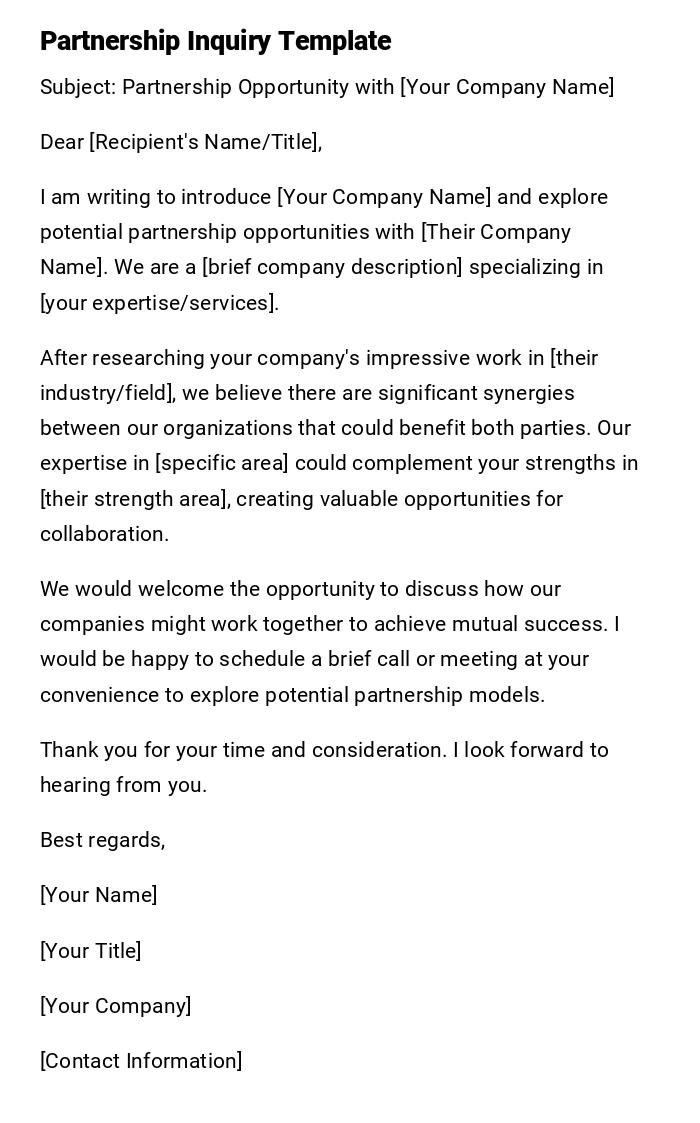
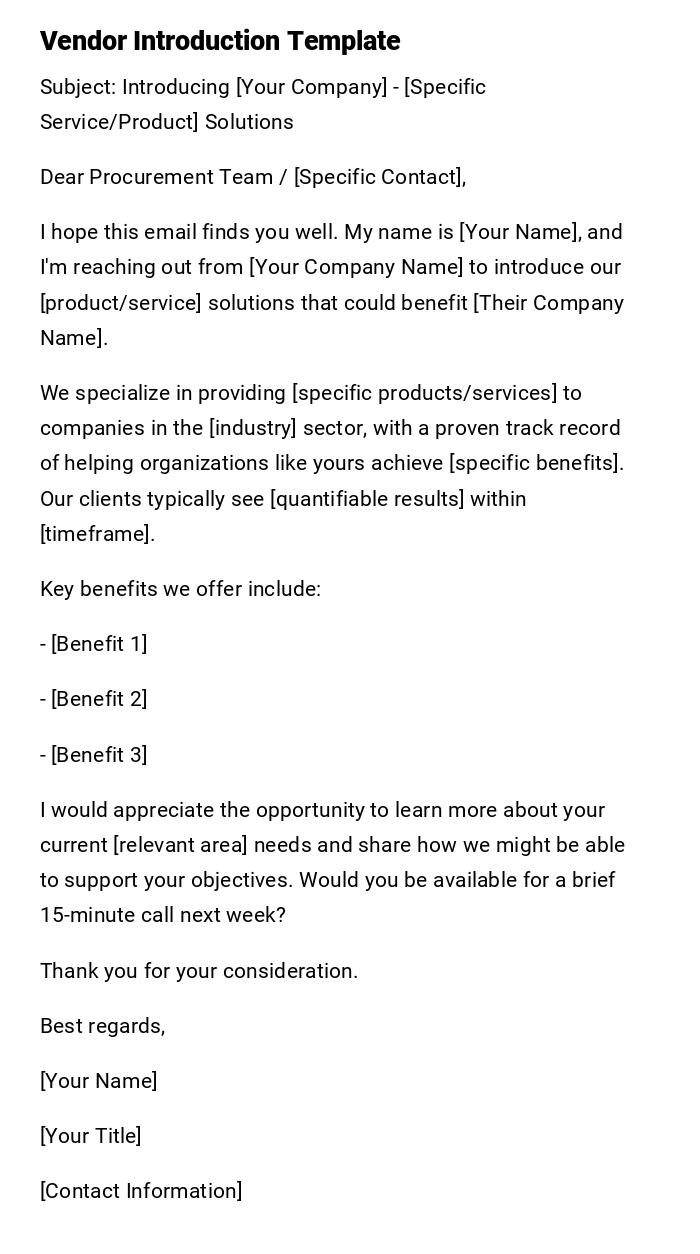
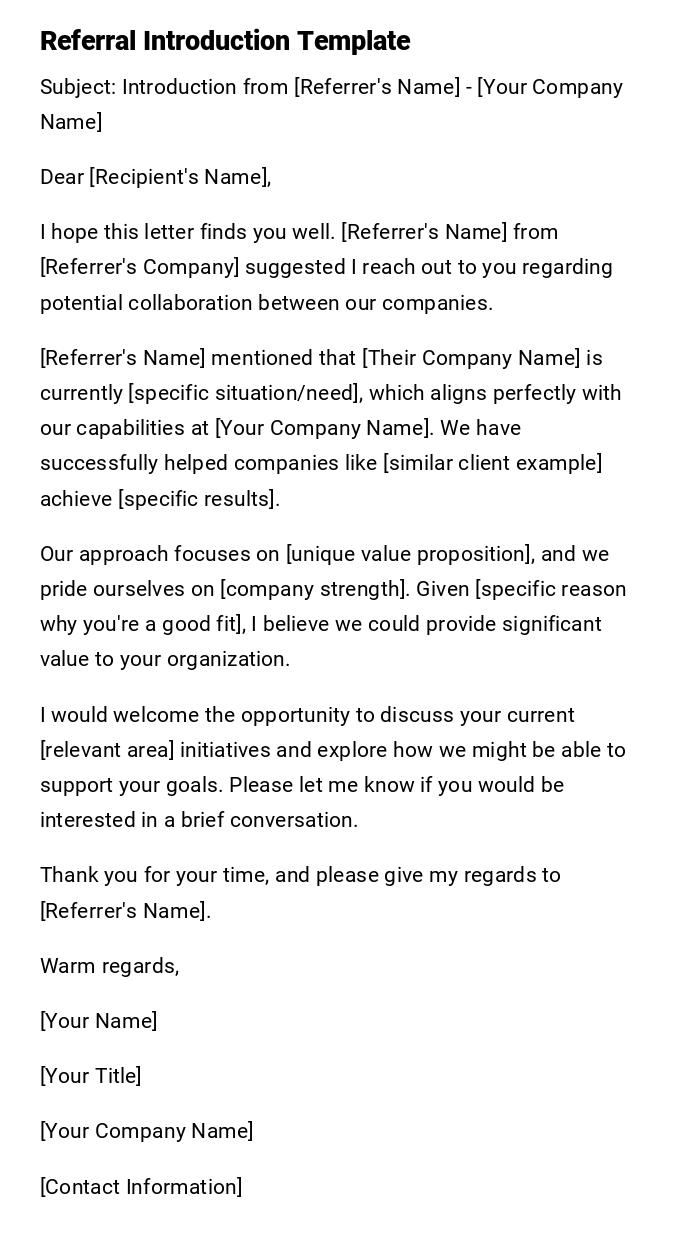
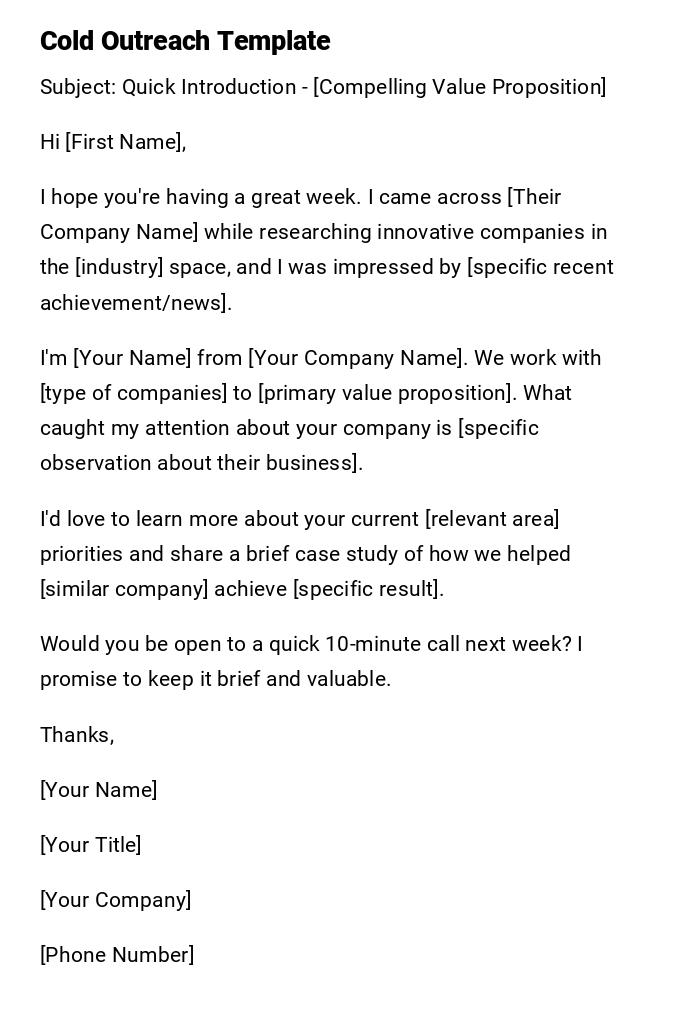
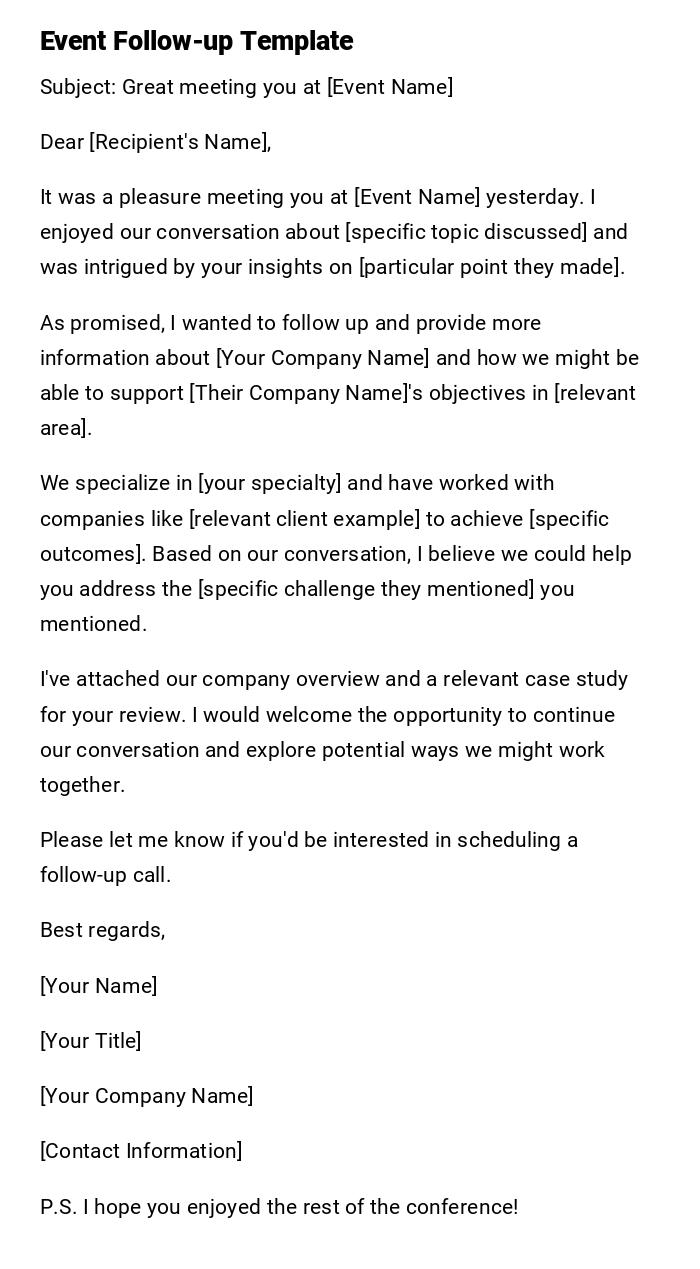
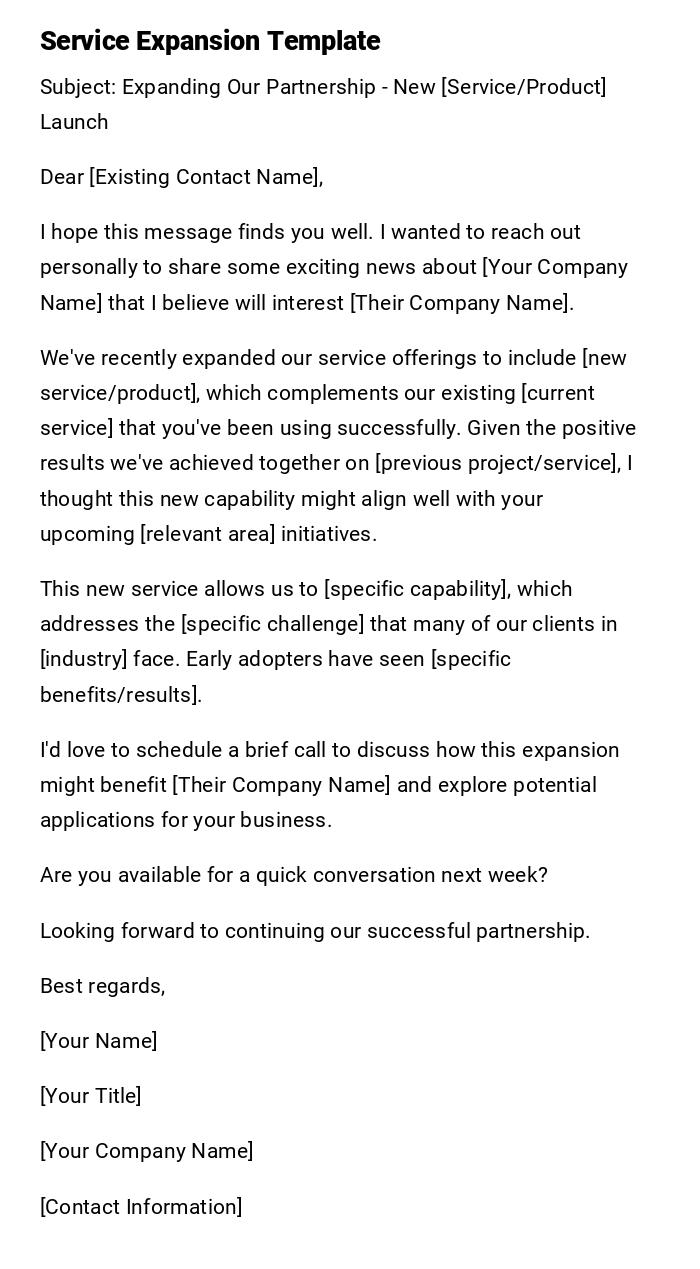
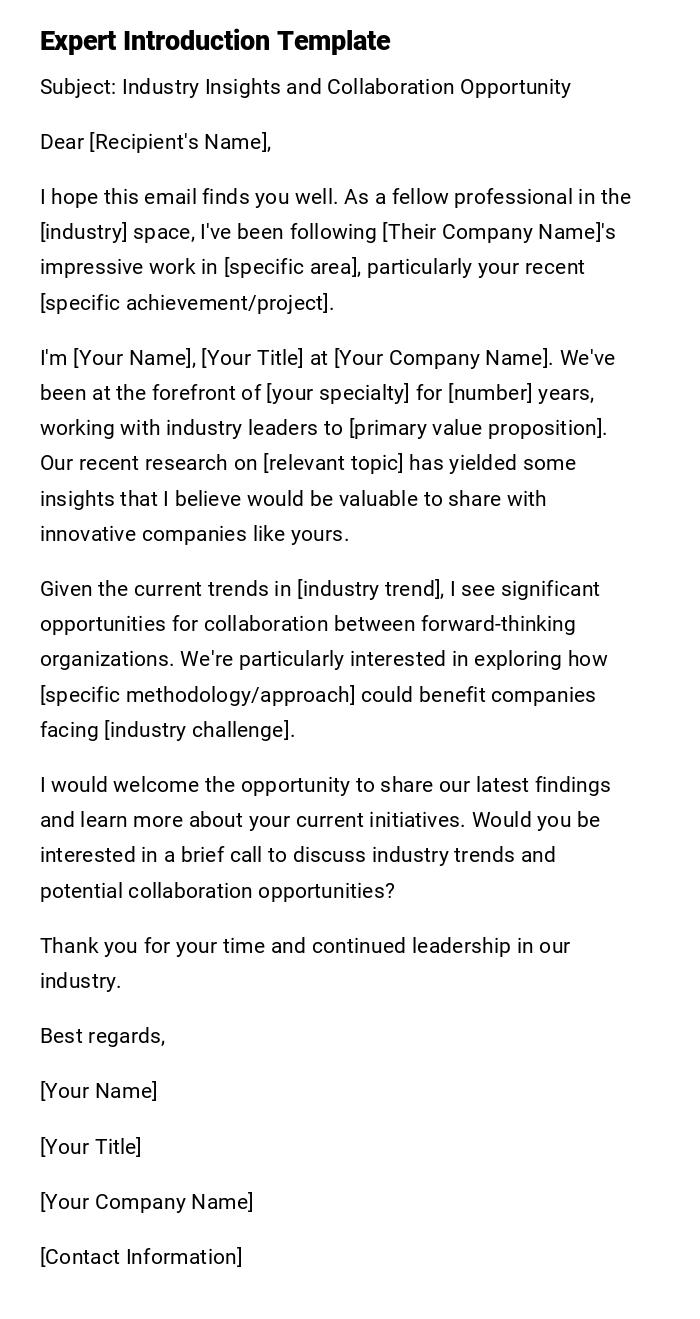

 Download Word Doc
Download Word Doc
 Download PDF
Download PDF